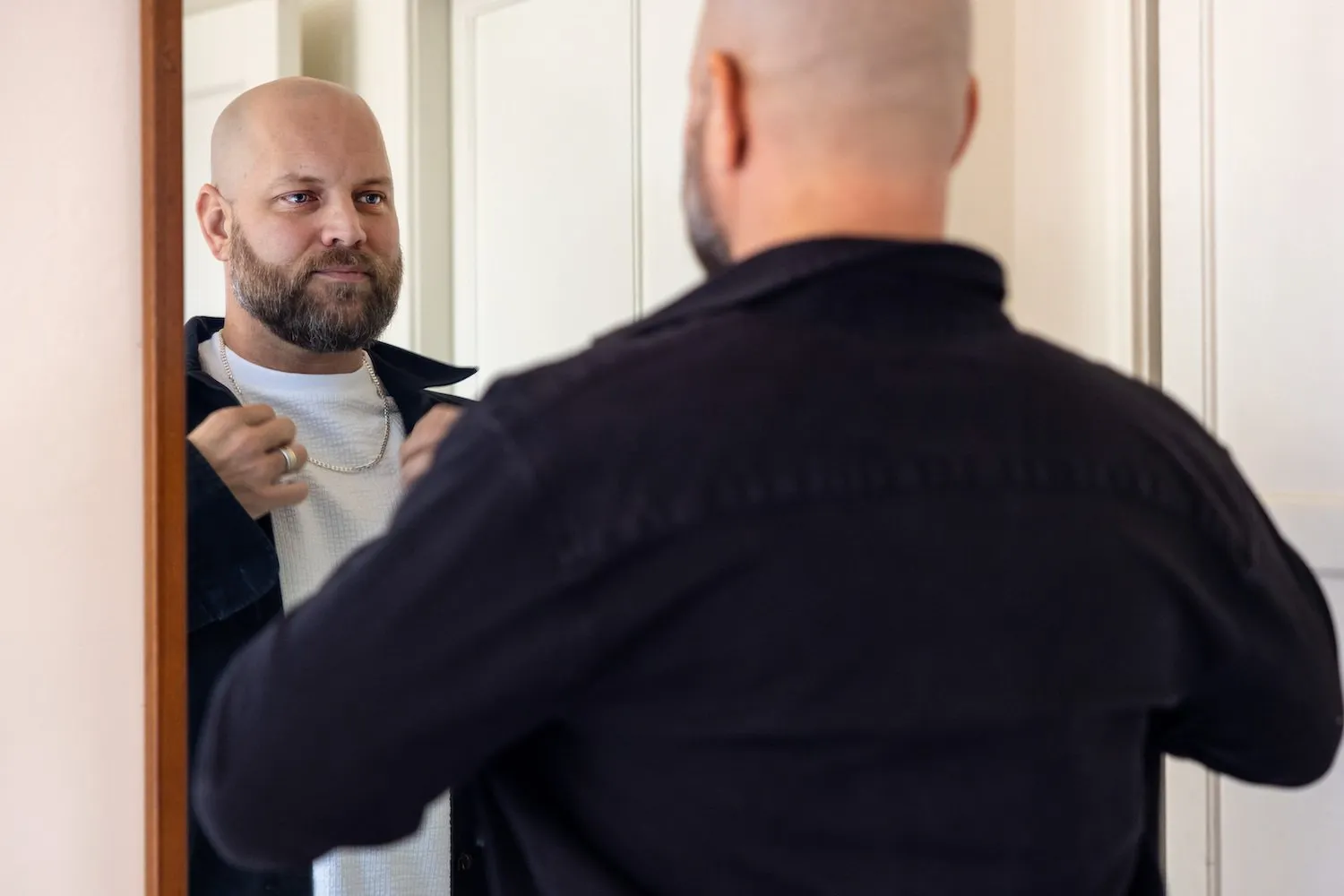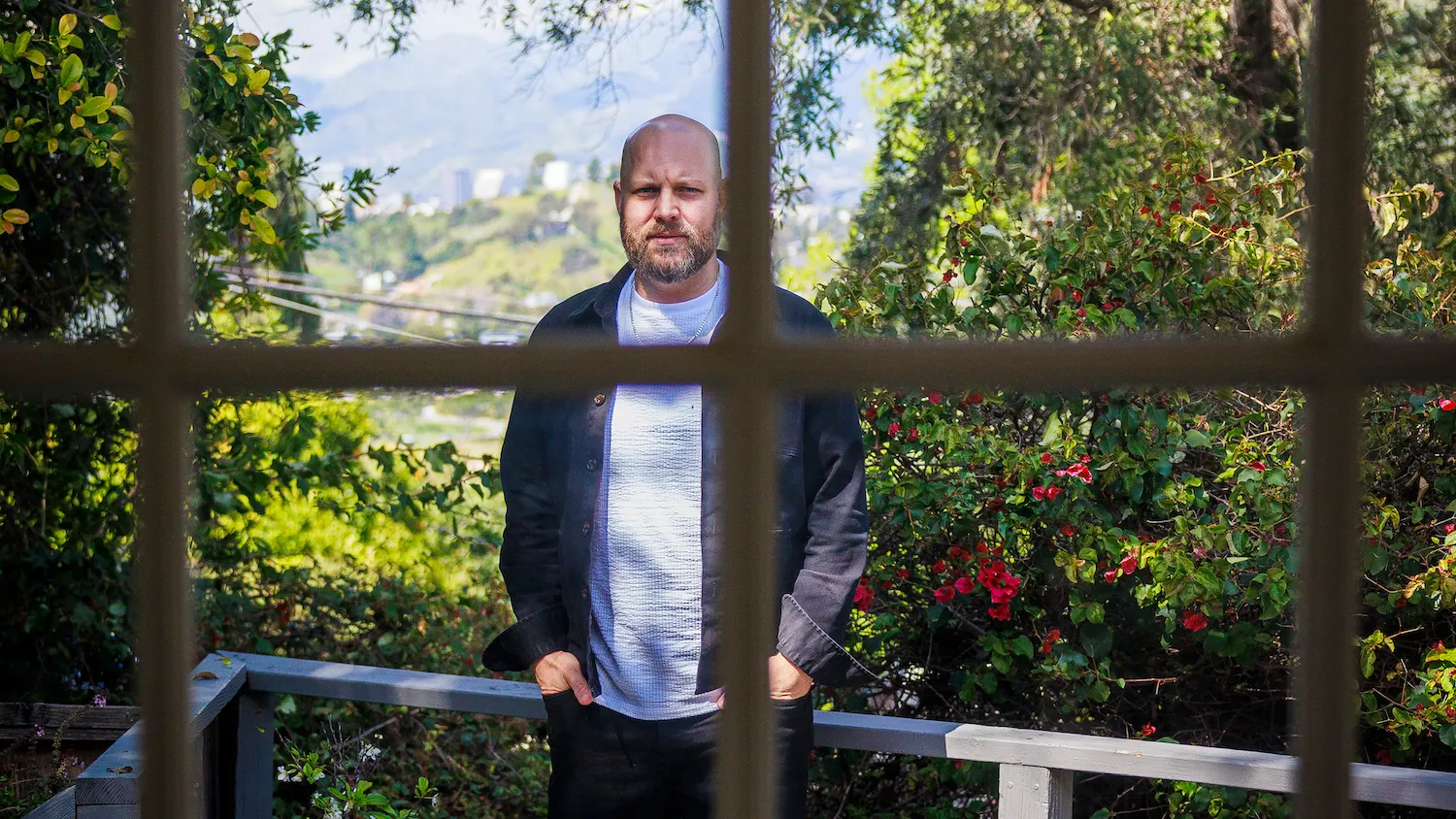A film Nick Sadler had executive produced was about five hours away from winning an Oscar, and a mysterious material would not dislodge itself from the interior of his showtime jacket.
“Oh my fuckin’ lord. Sorry. My language,” he said. “What the fuck is that? What do I do?”
It was cat hair, it turned out, courtesy of a quiet orange cohabitant of the sun-drenched house atop a hill in Los Angeles’ cutting-edge-hip Glassell Park neighborhood where Sadler was staying. Sadler was in town from London for Oscars weekend, eager to see through the final chapter in the incredible saga of the short film he executive produced, “An Irish Goodbye.”
'An Irish Goodbye' secures the Oscar for Best Live-Action Short Film #Oscars #Oscars95 pic.twitter.com/jpvXpEmqaI
— The Academy (@TheAcademy) March 13, 2023
The film—co-directed by Tom Berkeley and Ross White—had already swept a slew of film festivals, including the BAFTAs last month. Later that night (that is, last night), the film would go on to win the Academy Award for Best Live Action Short.
Sadler is a Web3 film producer. Or at the very least, a film producer who has been attempting for a number of years now to finance and promote film projects with the aid of blockchain technology. That hasn’t proven so easy.

He has struggled to get Web3-native projects—which in some cases sell NFTs to help fund production—off the ground. “An Irish Goodbye,” on the other hand, was funded entirely traditionally through Sadler’s film incubator First Flights, which produces films via both Web2 and Web3 crowdfunding models. Sadler operates First Flights with his partners Kirsty Bell and Phil McKenzie, and its Web3 platform is called FF3.
“We had to force people to get a MetaMask wallet, forced them to get USDC,” Sadler said of past Web3 film fundraising endeavors, as he used a large piece of black tape to remove the cat hair from his jacket. “That's not going to ever work, forcing people to do stuff.”
Sadler hasn’t given up on his Web3 dreams, though. Far from it. The success of “Irish Goodbye” has emboldened him to double down on his faith in blockchain technology, albeit with a slightly different approach.
“What we've learned in the last year is that a better path would be for Web3 to make up a portion of the finance of a film, when it’s already going to be made,” he said. “If you are longlisted for an Oscar, you have to pay for marketing, for PR—where do you get that money from? Why don't you use the tools that are available in Web3? Do some NFTs of the characters, pictures of the actors. It's harder to do that when the film hasn't been made.”
The jacket looked good now. He threw it over a clean white shirt, just steamed, that he’d bought the night before flying out.

“Rather than thinking of a film as 100% Web3,” he continued, “think, when you've got a great film on your hands, how can we amplify that with Web3?”
Navigating the meteoric rise of “Irish Goodbye” has revealed to Sadler how Web3 could more effectively aid independent filmmakers, especially during marketing and awards season campaigns. “Irish Goodbye” did not end up using NFTs; digital collectibles didn’t seem like a culture fit for a black comedy about a man and his brother (who has Down syndrome) navigating the death of their mother on a farm in rural Northern Ireland.
But the experience also appears to have influenced Sadler’s view on the immediate viability of upending Hollywood with blockchain tokens.
“Look, the hope that Web3 has given so many filmmakers, that there is an alternative that gives power back to the filmmakers, is very powerful,” Sadler said as he put on his good luck socks, which feature the brassy likeness of C-3PO from Star Wars. “You don't want to take that away.”

After the socks came black suede boots.
“But the people that have put [centralized] systems in place for a long time, they're the only ones that can change them, and they're not going to take power away from themselves,” he said. “That’s just the way the world works.”
Sadler hopes that an ecosystem of truly decentralized, fully Web3-native projects will eventually find its footing, but that may take some time. For now, film projects made with a hybrid model, pushed through existing structures—that, crucially, have a broad appeal beyond a geeky niche (NFT-backed dystopian cyberpunk thrillers? “No. That’s obvious. That’s not what you’re looking for,” he said)—look like the path forward. And that path looks very promising.
“There are just so many people into Web3 that are connected to traditional Hollywood,” Sadler said. “Literally me today, our film, it’s all happening. There are enough people that are part of the very high levels of the traditional film system that are behind us.”
Sadler’s met a number of Hollywood power players on his short film’s ascendent journey. One, a high-profile film producer whose identity this reporter swore an oath not to reveal, took the “Irish Goodbye” creative team under their wing after falling in love with the film, introducing them to a number of key contacts in the industry. Sadler planned to stop by said producer’s Oscars viewing party after making an appearance at the Irish Consulate.

As for plans for the rest of his night, Sadler wasn’t yet sure. Due to ticketing limits, Sadler couldn't attend the actual Academy Awards ceremony, but he was ready to celebrate the film's success—whatever the outcome.
The marquee, star-studded Vanity Fair Oscars party was a potential candidate, but the “Irish Goodbye” team had been informed they’d only be invited if they won the Academy Award.
Luckily, they didn’t have to find a backup destination.
Editor's note: This article was updated after publication to clarify Sadler's role on the film and First Flights leadership.

